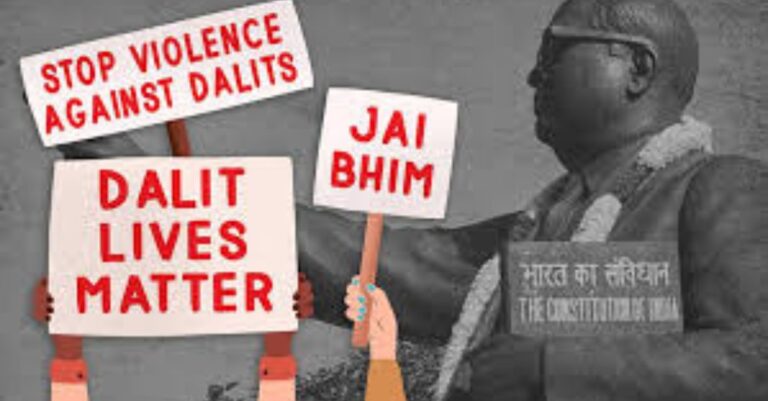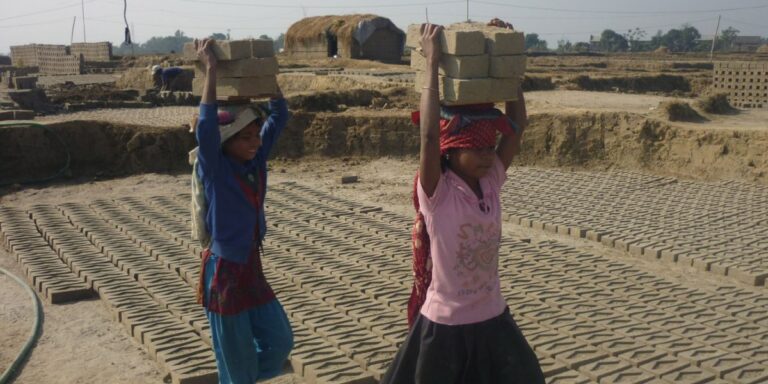When I sit to write the first line of this piece, the air around my house is filled with the war cries of ‘Jai Shree Ram’, ‘Bharat Mata Ki Jai’ and ‘Hindu Rashtra Ki Jai’. The lanes and by-lanes are jammed with trucks on which the boys in orange T-shirts are dancing and chanting the slogans with the unique beats of Hindutva pop singers. Almost all of them are between 14 and 30 years old. Some boys are on bikes and scooters. They are carrying no party flags. All are carrying orange-coloured flags. Some flags are printed with the image of Lord Ram. And some bear the image of Veer Hanuman.
The boys are taking pictures of their friends during the Ram Navami march. Many are taking selfies. Within seconds, they upload images and videos to social media platforms. Now and then, they check their mobile phones and become happy with the likes and comments they get. Passers-by get a chance to add jinx to their otherwise dull and dreary day.
The Muslims who have come to the town from the adjacent villages for official work are a confused lot. They don’t know what is going on the street. Why is the procession? Where are the familiar party flags with the symbol of hand, flower, scythe and hammer? Panchayat election is knocking at the door, they know. Potholed streets are being repaired overnight. Surely, the election is coming. But where are their familiar flags?
My children are checking new books bought for the coming session. Our maid is offering Zahur prayer. My wife is at school. She will come and confess her fears of seeing the sea of boys whose foreheads are marked with tilak, whose body language tells you all.
Our liberal friends might be offended by the sight of the boys from their neighbourhoods. But they are not scared. They don’t wear the skull cap. Very few eat beef. They are communists, and they are Hindus. In the question of ‘authentic’ Indian identity issues, they can easily be spared from the stigma of anti-Indian.
The land is meant for Hindus. And our liberal, good neighbours have no qualms with their Hindu selves. The problem lies with us—whose way of life is markedly different from that of a typical Hindu. So, labelling a Muslim as an antinational or anti-Indian is quite easy. He can be easily booked under UAPA.
Today is Ram Navami, and the boys are showing how it should be celebrated. A decade ago, it was a plain event. The day was celebrated by the VHP (Vishwa Hindu Parishad) and its members. They used to organise a procession, mainly consisting of school-going children, which makes a round across the town. The VHP office was decorated with neon lights. Talks and seminars were held. Sweets were distributed among the children and its members. They have many outreach programmes. The organisation has many members from all walks of life.
But the event at the day of Ram Navami was ordinary. Only the VHP members and its sympathizers and children from those homes took an active interest in it.
Within a decade, the Ram Navami celebration has undergone a sea change. It has been politicized. The BJP has made it a key issue across the country. The RSS and its multiple outfits have been encashing on it. My town has taken its strength from the running Hindutva currents.
People have come on trucks from adjoining villages for the celebration. Jai Shree Ram’s flag is in hand, and the forehead is tied with a piece of cloth printed with the Jai Shree Ram tag. They sing in praise of Lord Ram and beat traditional drums. Their singing and drum-beating are at intervals interrupted by the chanting of the young boys, ‘Bharat Mata Ki Jai’, ‘Hindu Rashtra Ki Jai’. Street corners, parks, main streets, and inner streets are packed with frantic faces, and police are escorting them.
Before the 2021 West Bengal Assembly election, many youths had been arrested for openly saying ‘Jai Shree Ram’ on the street. In the said election, BJP emerged as the main opposition party, bagging nearly 80 seats out of 294. Many Hindus were disappointed. But they were happy as they had been able to penetrate the Hindutva agenda into a vast section of babu Hindus.
Guru Golwalkar and Savarkar have already made substantial inroads into the arteries of Bengali Hindus. Luminaries like Rabindranath Tagore and Netaji Subhas Chandra Bose no longer attract the younger generation. Unemployed youths are being recruited as party workers or flag bearers. The boys of our neighbourhood look alien when they chant ‘Bharat Mata Ki Jai’ and hold rallies around the town. Passersby are amazed and appalled by the display of their body language.
In this scheme of things, Muslims have a limited role to play. The Hindus are mobilised along religious lines, and the liberal space is speedily shrinking day by day. What will the Muslims do? If they plunge into water, the crocodiles will tear them apart. If they land on land, they will be lynched or burnt to ashes.
If my growing children ask about the 2023 Ram Navami march, what will I say? We don’t bring the outside world into our tiny room. Of course, the youths, the boys, and the men and women of our town do not carry bamboo poles, daggers, knives, and other godly weapons. They display only the Jai Shree Ram flags specially designed for the occasion.
The procession is harmless. Men and women from the roofs are watching the waving flags. They are chatting and laughing. Of course, children from the liberal Hindu homes have not joined it. Of course, they are studying hard to become doctors, engineers, and IT professionals. Many of them are civil service aspirants. Many of them are readying themselves to go to America to pursue higher studies. But will it make any difference to the larger polarised society of my town?
We know that the boys and youths are unemployed. Many work as part-time hands in shops, garages, and brick kilns. Some of them are nonbengalis, we know. But what about the rest? RSS and its affiliated outfits have found a welcome entrance into liberal Hindu homes, where photos of Rabindranath Tagore and Netaji Subhas Chandra Bose are still hanging on the walls.
Within five hours, the show of Hindu strength was finished. The groups had retreated to their old habitats, and the town looked normal.
During my evening stroll in Barrack Square, I watch some boys sporting Hindu Rashtra Ki Jai T-shirts with Jai Shree Ram Flags stuck to the ground, resting by the side of the beggar whom I routinely cross. Yonder, the prostitutes are bargaining with their customers for the feast of the day!
(First published on Countercurrents)




